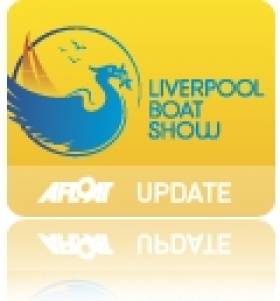Displaying items by tag: Royal Dee Yacht Club
Royal Dee Yacht Club Bicentenary Dinner Celebrations
The Royal Dee Yacht Club Bicentenary Dinner, the high point in their 200 year celebrations, took place at Eaton Park, Eccleston, Chester, on the 17th September 2015.
Eaton Park is the private residence of the Duke and Duchess of Westminster with whose kind permission this historic occasion took place in that special venue. The pre-dinner reception was held in the Long Room followed by dinner in the adjoining Wolf Room. During the reception, chamber music was provided by a period chamber orchestra.
Members and guests had a rare opportunity to view part of this spectacular estate that included the famous collection of carriages and the “Shell Grotto”. To mark the event, all the Royal Dee Yacht Club’s magnificent trophies, many of whom had been out on loan to yacht racing associations and had been recalled, were on display. Special commemorative silver lapel pins to mark the occasion were presented to all Royal Dee Yacht Club members present and a specially engraved souvenir of the event was presented to all members and their guests.
Dignitaries attending the event included the Commodores of the Royal Ocean Racing Club, the Royal Alfred Yacht Club, the Royal Anglesey Yacht Club and the Royal Mersey Yacht Club. The Irish Sea Offshore Racing Association, (ISORA) was represented by their Chairman, Peter Ryan, who is also a member of the Royal Dee Yacht Club.
The members and guests were treated to a sumptuous meal prepared by the Chester based Michelin star Chef, Simon Radley. A copy of the menu for the dinner is attached.
The Commodore of the Royal Dee Yacht Club, Derek Matthews, welcomed the members and guests while Vice Commodore, Callum Edge gave the Loyal Toast and the Toast to the Guests. The Reply to the Toast to the Guests was made by Commodore of the Royal Alfred Yacht Club, Barry MacNeaney. He emphasised the support that the Royal Dee Yacht Club has given over the years to offshore yacht racing. He also acknoweldged the historic strong and developing bonds between the Royal Dee Yacht club and yacht clubs on both sides of the Irish Sea.
The evening was a fitting tribute to this historic event and enjoyed by all who were privileged to have attended.
Mersey's Biggest Sailing Event to be Staged at Liverpool Boat Show
About 150 boats will compete in a series of spectacular races on each of the two weekends of the show, which takes place from April 29 to May 8 next year.
Up to three races will be held each day on the weekends of April 30 and May 7, with classes for modern racing yachts, ultra-fast multi-hulls, local classes and traditional nobbys.
The regattas – comprising the Royal Dee Yacht Club Spring Regatta and the Liverpool Yacht Club Kindred Clubs Regatta – will be one of the main highlights of the Liverpool Boat Show, which takes place in the splendid surroundings of the Albert Dock.
Competitors from across the UK and Ireland are expected to take part in the regattas, which will see boats racing against each other on courses in front of the Albert Dock.
Today organisers urged enthusiasts and clubs to submit their entries for the races to secure a place in one of the most spectacular sailing events of the year.
Alastair Soane, chair of the race committee, said: "This will be the biggest sailing event for probably 70 or 80 years on the River Mersey and interest is already very high."
Alastair Soane, a past Commodore and President of Liverpool Yacht Club who sits on the steering committee of the boat show, added: "We already have expressions of interest from clubs and individuals in Scotland, Wales and Ireland and we are keen to get representation from the sailing fraternity right across the UK, including the South coast.
"The combination of the festival atmosphere of the show and the spectacle of the racing will make these truly unique events and we'd urge potential participants to register as soon as possible."
A number of North West clubs are supporting the regattas, including Liverpool Yacht Club, the Royal Mersey Yacht Club, the Royal Dee Yacht Club, West Kirby Sailing Club, Wallasey Yacht Club, Dee Sailing Club, Blundell Sands Sailing Club, Liverpool Sailing Club, Hoylake Sailing Club, West Lancs Sailing Club and the Nobby Association.
Mr Soane said: "The entire North West sailing community is throwing its weight behind the Liverpool Boat Show and we are determined to make it a show like no other and to showcase to a whole new generation the pleasure and benefits to be had from sailing."





























































